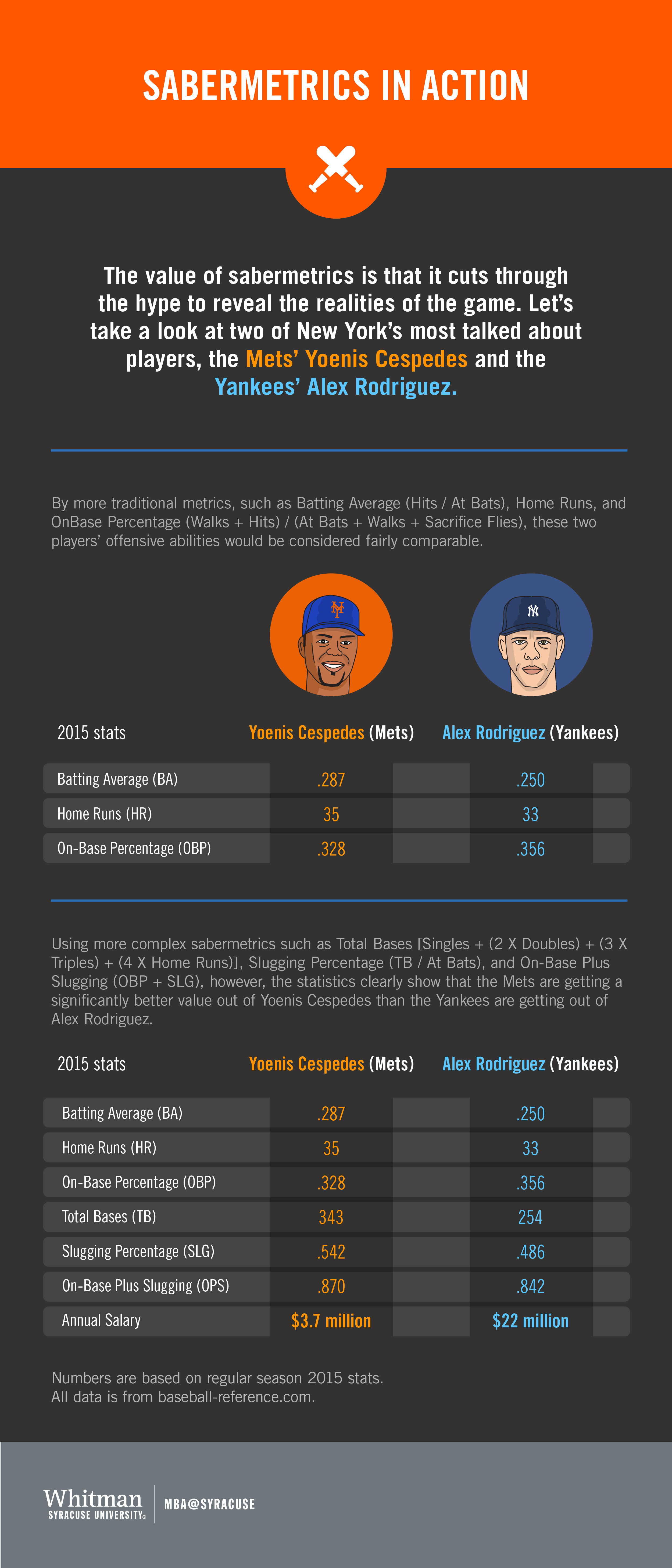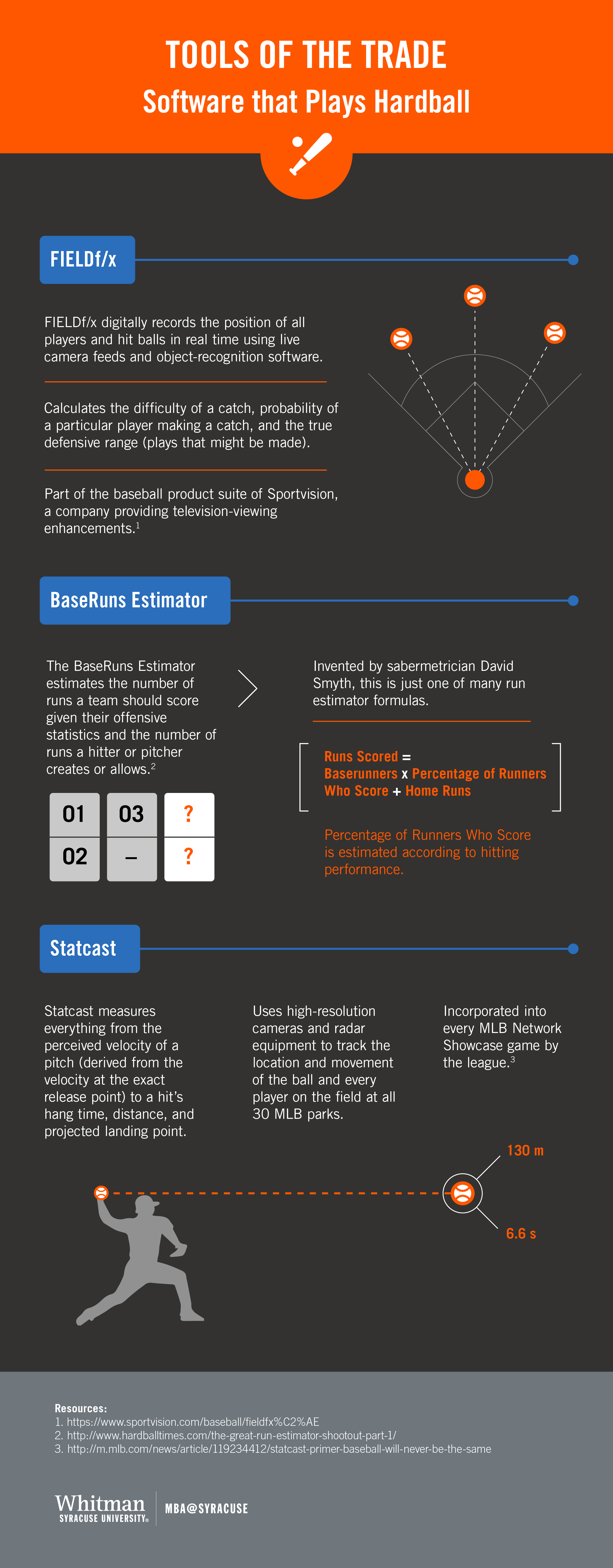Sabermetrics: Baseball Analytics and the Science of Winning [Infographic]
Though the term “sabermetrics” has only been around since the early 1980s, the practice of using statistics to gain a winning edge in baseball goes back almost two centuries. As the tools of sabermetrics continue to advance, teams like the New York Yankees and Mets are becoming more adept at using analytical tools to dissect the science of winning.
By the Numbers: What is Sabermetrics?
Sabermetrics is a science of sport. It is the empirical analysis of baseball through statistics, used to predict the performance of players, giving teams a winning edge.
With the help of sabermetrics, teams can:
- Forecast results by making predictions based on previous data
- Analyze on-field performance by recording and evaluating important aspects of play
- Assist in decision-making by offering objective insights into players’ performance, matchups, and scouting prospects
Who’s a better pitcher? Where should our outfielders play? Which player is a better value for our team? Who was the greatest second baseman of all time? Thanks to sabermetrics, all of these questions can now have objective answers.
Beyond the Box Score: A Brief History of Sabermetrics
Just as the origins of baseball are difficult to pin down, so too is the start of sabermetrics. The term itself was coined in 1980 by renowned baseball analyst Bill James. Named in honor of the Society for American Baseball Research (SABR) of which James is a member, he called sabermetrics “the search for objective knowledge about baseball.” However, that’s not where the story begins. From simple scorekeeping to the more complex statistics that define the game today, statistics have long been important in baseball.
Let’s take a closer look at key milestones in the making of sabermetrics.

Sabermetrics in Action
Now that we know what sabermetrics is and how it came to be, we can demonstrate baseball analytics in action with a side-by-side comparison of two players.

Tools of the Trade: Software that Plays Hardball
Sabermetrics is made possible in part because every baseball game generates a ton of recorded data. But how is it processed? “Sabermetricians,” as experts of sabermetrics are sometimes known, use a variety of tools to record games and glean insight from this data. These tools can be as simple as formulas used to derive statistics and as complex as high-definition cameras coupled with recognition software to analyze plays.
Each sabermetric tool has its uses and drawbacks, but some are more commonly used than others. Here are a few of the tools you’ll find in the modern sabermetrician’s toolbox:

Who’s Keeping Score? Careers in Sabermetrics
The rise of sabermetrics has revolutionized not only how managers and coaches make decisions on the field, but also in how teams hire talent for front office positions. Historically, jobs such as general managers and assistants were reserved for former players. Thanks to sabermetrics, these front office positions have now opened up to those able to analyze sabermetrics data and help implement those insights in operations and scouting departments. Unsurprisingly, the industry is piquing the interest of many. In 2013, undergraduate students at Syracuse University’s Falk College of Sport and Human Dynamics formed the Baseball Statistics & Sabermetrics Club. And when EdX first launched a free sabermetrics 101 course, more than 13,000 people signed up in 2014. The interest in the business analysis of baseball continues to evolve.
For those interested in a career in sabermetrics or who want to become experts in discovering meaningful patterns in data, it is important to do a bit of research on business analytics and data science occupations to determine if sabermetrics is a suitable career path. Ideal candidates for sabermetrics jobs not only need an understanding of sabermetrics (and an interest in baseball), but also need formal training in statistics possessed by analytics professionals, data scientists, and MBA graduates.


